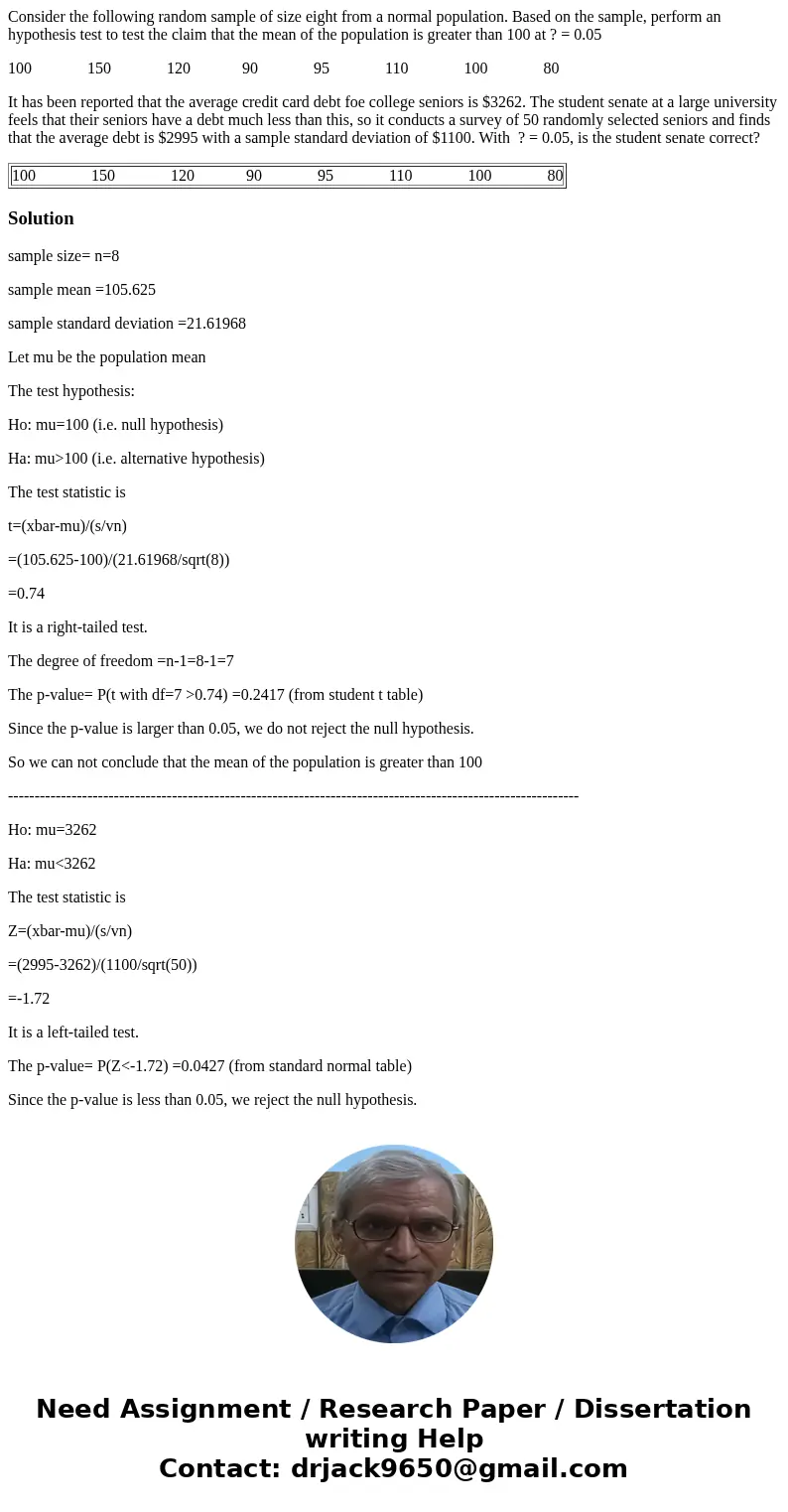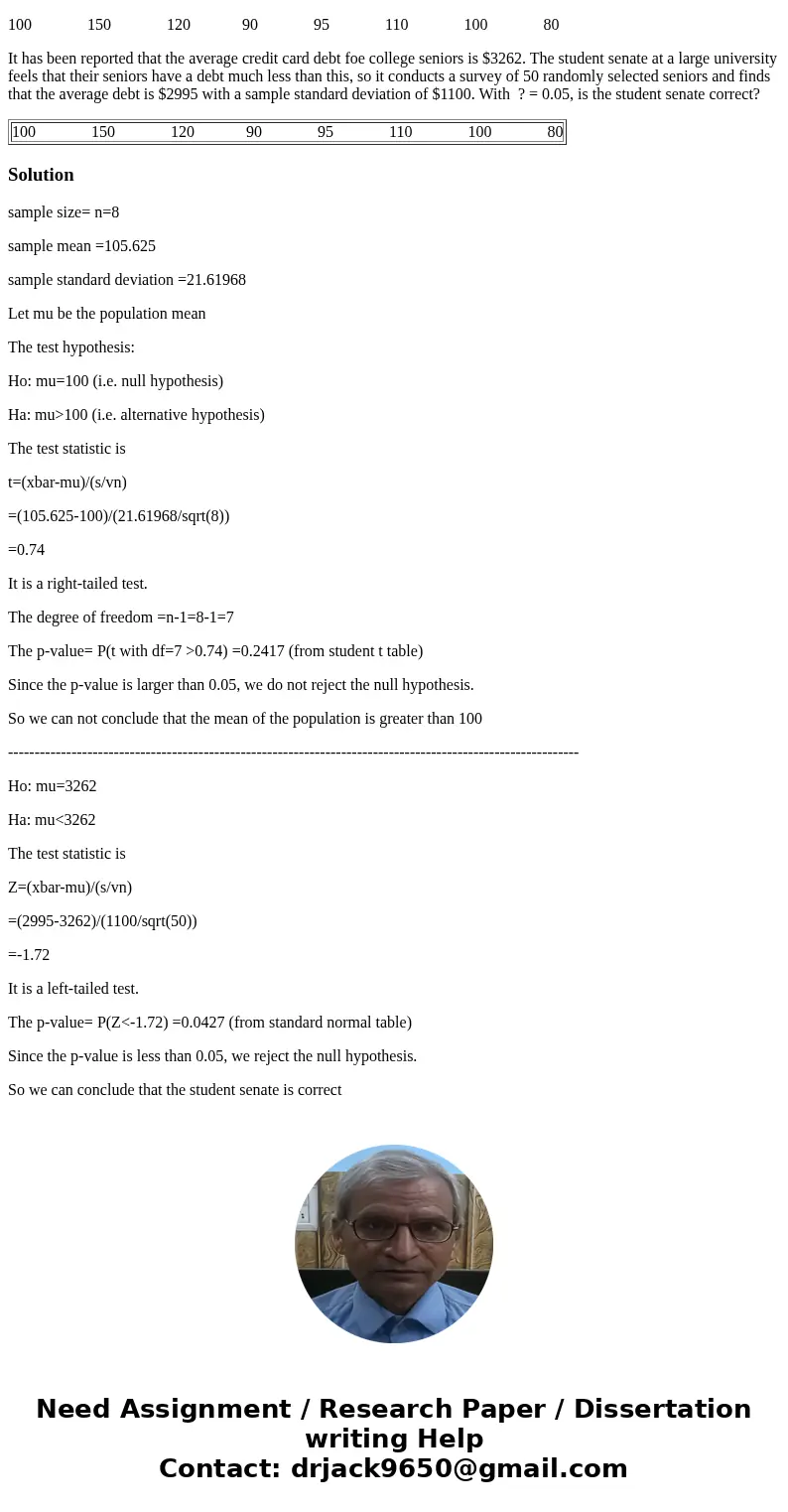Consider the following random sample of size eight from a no
Consider the following random sample of size eight from a normal population. Based on the sample, perform an hypothesis test to test the claim that the mean of the population is greater than 100 at ? = 0.05
100 150 120 90 95 110 100 80
It has been reported that the average credit card debt foe college seniors is $3262. The student senate at a large university feels that their seniors have a debt much less than this, so it conducts a survey of 50 randomly selected seniors and finds that the average debt is $2995 with a sample standard deviation of $1100. With ? = 0.05, is the student senate correct?
| 100 150 120 90 95 110 100 80 |
Solution
sample size= n=8
sample mean =105.625
sample standard deviation =21.61968
Let mu be the population mean
The test hypothesis:
Ho: mu=100 (i.e. null hypothesis)
Ha: mu>100 (i.e. alternative hypothesis)
The test statistic is
t=(xbar-mu)/(s/vn)
=(105.625-100)/(21.61968/sqrt(8))
=0.74
It is a right-tailed test.
The degree of freedom =n-1=8-1=7
The p-value= P(t with df=7 >0.74) =0.2417 (from student t table)
Since the p-value is larger than 0.05, we do not reject the null hypothesis.
So we can not conclude that the mean of the population is greater than 100
------------------------------------------------------------------------------------------------------------
Ho: mu=3262
Ha: mu<3262
The test statistic is
Z=(xbar-mu)/(s/vn)
=(2995-3262)/(1100/sqrt(50))
=-1.72
It is a left-tailed test.
The p-value= P(Z<-1.72) =0.0427 (from standard normal table)
Since the p-value is less than 0.05, we reject the null hypothesis.
So we can conclude that the student senate is correct


 Homework Sourse
Homework Sourse